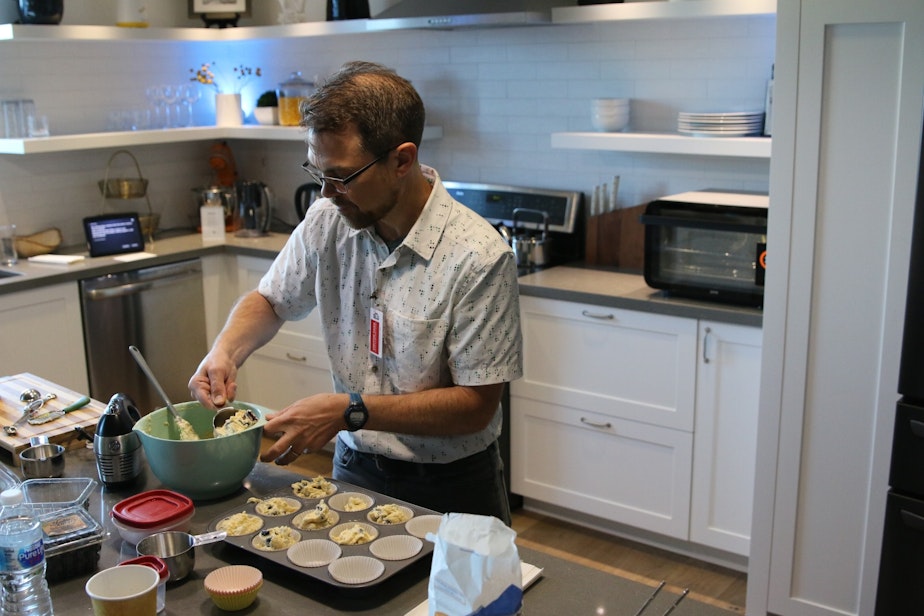Amazon has a 'secret apartment.' What's in it? We found out

There’s a secret apartment on the 30th floor of Amazon’s Day One building in Seattle.
We’ve wanted to get inside for months.
This week, we finally did.
The Amazon apartment is part lab, part showroom — a space of beige, chrome- plated, Jetsons-meets-Stepford Wives bliss.
Alexa is at the center of the Amazon smart home; the humans who live there talk to Alexa, and she relays their orders to the appliances and door locks and window blinds.
But as anyone who has frantically waved their hands under the automatic faucet in a public bathroom knows, automated devices don’t always work as promised.
Hanging out in the Amazon apartment, you can’t escape the realization that future is here – and it’s not as perfect as we want it to be.
Hacking the home
Sponsored
We asked Nathan Smith, director of Smart Home Core Components at Amazon, how Amazon got into the smart homes market.
It began, he said, with a Hackathon. (Of course.)
In 2015, the Echo had just launched. You could play music on an Echo, or ask it to put things in your Amazon shopping cart, but it couldn’t control anything in your home.
But Philips, the light bulb company, had a system where you could remotely control smart light bulbs using your phone.
Their system had an open API, which means that anyone who could code could build an application to remotely change the state of a light bulb.
Sponsored
People were already connecting smart light bulbs and the Echo in their own homes. The hackathon took that tinkering and turned it into the first smart home Alexa skill.
And Amazon realized that Alexa held the key to unlocking the true potential of smart home devices: voice control.
Baking with Alexa
When you see coverage of Amazon’s smart home technology on the news, everything works flawlessly.
We wanted to see how Alexa performed in more complex, messy situations. So we decided to bake blueberry muffins in the Amazon apartment.
Sponsored
Baking is a good test for the Alexa-controlled smart home because it’s a common household activity that requires multitasking and flexibility.
And this experience? Good, but a little less than flawless.
Alexa excelled at finding a recipe and reading it to us, step by step.
Joshua first asked Alexa to ask June (the oven) to preheat the oven. The command didn't slip easily off the tongue, but the oven did turn on.
After that, however, things got messier.
Sponsored

Alexa acts as a mediator between humans and the other smart home technology. You’re not talking to the devices themselves. You’re telling Alexa to talk to the device.
And sometimes it's like they don’t speak the same language.
This is where our relaxing baking adventure turned into a comical game of telephone.
It started when Joshua got egg on his fingers and needed to wash his hands with the voice-controlled Delta faucet.
Sponsored
Alexa balked when Joshua asked it to turn on the “sink” rather than the “faucet,” and then again when he asked her to turn it off, but didn’t call it by its proper name (“Delta”).
Alexa’s like a contrarian teenager. “Oh, did you mean this faucet?”

You can buy this Delta faucet for $500, about twice the price of a similar faucet without Alexa compatibility. But with so many kinks, it feels unfinished.
That's because it is. Engineers will continue to tinker with it long after you've brought it home from the store, pushing out incremental improvements to its programming while it's in your home.
Should Alexa be programmed to act on "hunches"?
Baking muffins with Alexa, we encountered an interesting paradox.
Right now, Alexa sometimes struggles to turn on a faucet or switches on the lights in the middle of the night. But it seems like the path to creating a more functional smart home means giving Alexa more power, not less.
Amazon is now training Alexa use pattern recognition to make assumptions about our behavior and desires. These changes would let Alexa act on vague or incomplete instructions, if she’s able to convince herself of your intent.
They are also training Alexa to watch your behavior and to let you know if something is out of place. For example, if you went to bed and forgot to lock the door one night, Alexa would assume, based on past behavior, that it should lock the door.
Amazon calls this behavior “hunches.”
Alexa would get much better at her job. But letting Alexa improve in that way means allowing her to keep even closer watch on our lives.
. . . . . . .
This is the first part of a two part web story. In Part 2, we visit an Amazon smart home development in Black Diamond, WA. We also hear about some researchers' concerns that smart home technology could be exploited in troubling ways.




